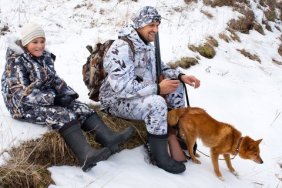 As previously mentioned in part one and two, location of cameras is just as important as maintaining them and preventing their theft. Another use idea that should be considered is variety. If you are monitoring wide open fields and game trails inside of timber, this calls for two completely different types of cameras.
As previously mentioned in part one and two, location of cameras is just as important as maintaining them and preventing their theft. Another use idea that should be considered is variety. If you are monitoring wide open fields and game trails inside of timber, this calls for two completely different types of cameras.
To adequately monitor fields and open spaces, you should utilize a time lapse camera. Cameras that detect movement have a limited range, but time lapse cameras overlook the entire field and usually have a deep focus lens that will ensure you get shots up to 100 yards away. This is a feature that regular game cams just can’t perform, so mix up your fleet of cameras and get those time lapse set up on the south side of your open spaces.
If your intention of using a game camera is to target a specific buck, it is best to leave that camera alone for as long as possible. I know first-hand how exciting it is to want to get pics of big bucks, but the less you invade the area, the more likely a mature buck is to act naturally. Once you run a buck out of an area, he will be hesitant to use that area the rest of the year, so be careful and be patient.
If you are serious about learning all you can from your game cameras, then you should document their results. Keeping a running log or journal is paramount to detecting yearly patterns. It is also a good tool for proper herd management.
Finally, don’t fall into a rut with your cameras. Experiment by making mock scrapes on the edge of a known buck’s core area and see if you can nail some shots of him. I like to find community rub trees where multiple bucks will stop and check in by rubbing their antlers on the same tree as the others. This is an excellent way to determine how many young bucks are on the property you are hunting.
Where legal, set out some minerals or bait and set your camera up to observe those piles. This is a good way to see what deer are residing on a property and another useful tool for knowing what your doe count is. Once one doe finds a bait pile, others will follow. Another trick that I have used is to apply some coyote urine to a tree base and set up a camera low enough to monitor predators that come and check it out. If there is a coyote anywhere in the area, it will smell the urine and check it out. This is a great way to see what else is lurking on your hunting location.








